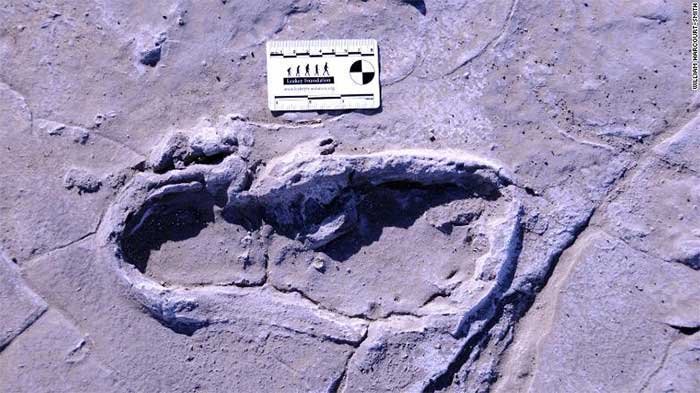Africa's largest fossil footprints reveal how the ancients sought food
Scientists discovered hundreds of fossilized human footprints that lived about 5,760 to 19,100 years ago in Africa.
The new discovery sheds light on life in ancient communities on the black continent. It is also the largest collection of fossil footprints found in Africa.
According to CNN, the researchers said there were about 408 footprints, forming 17 different trails, belonging to 14 mature women and 1 young man.
Kevin Hatala, research author and assistant professor of biology at Chatham University in Pennsylvania, said: "The foot prints in areas of volcanic mud, when it dries, it is as hard as cement. The footprint is very elastic. Other layers of sediment also bury the surface, helping to form protective layers that shield the surface from extraneous elements for thousands of years. "

Fossil footprints are considered to be extremely unique.
The research was published in the journal Science Report yesterday. In 2008, the local Maasai community discovered and shared this information with conservationists. They expanded their search and discovered in several locations, such as Engare Sero, south of Lake Natron and northern Tanzania.
In 2009, thanks to natural erosion, researchers discovered about 56 footprints. Later excavations between 2009 and 2012, they discovered the remains.
17 tracks made moving at the same speed, going south.
Fossil footprints are considered to be extremely unique, unique because they hold evidence of ancient human behavior and activities.
Hatala said: "The footprint holds great footage of the past, through which we can directly observe snapshots of people moving through the scene at a specific time."
Hatala also thinks that they give notice of how fast people move, which direction to go, how big the feet are, and how to go in groups. With such rich details, it is difficult to detect through other types of data.

Scientists discovered about 408 human footprints in Tanzania.
Researching data, compared with models of modern hunter-gatherer societies, scientists realized that it is rare for adult women to form large groups together without adult men. or the teenager with you.
Hatala said: "In collaborative foraging activities, some mature women seek food together, possibly with one or two other men. They can bring infants. , children who have walked home will not be part of the food search process ".
The women in the group walked at the same pace, in the same direction as the man. This shows that labor is divided by gender in the ancient community. It is similar to the behavior of hunter-gatherer societies in Aché and Hadza, Paraguay and Tanzania.
Fossil data on humans are rarely found in this area, so the findings of the Hatala team are extremely interesting.
In addition, they also found evidence of some animals such as zebras, antelope, buffalo to the southwest. These animals are living in the same landscape as those with the upper footprint.
Hatala hopes their research promotes future research and the important issue is now a long-term conservation plan.
- Discovered human footprints buried in the sand 80,000 years
- Whose fossil footprints on Roccamonfina volcano are?
- The largest fossil animal population
- Rumored footprints from demons around the world
- The world's largest dinosaur footprint has been identified
- Find the world's largest dinosaur footprint
- Discover the oldest fossil animal footprint ever
- Discover fossil giant footprints in Western China
- Large fossil dinosaur footprints discovered
- Discover the smallest dinosaur footprint ever
- Discover the most mysterious, ancient and mysterious
- Find fossil tracks of 3 duckbill dinosaurs
 Discovered an ancient centipede fossil 99 million years old
Discovered an ancient centipede fossil 99 million years old Discovered bat-like dinosaurs in China
Discovered bat-like dinosaurs in China Discovered a 200-year-old bronze cannon of the coast
Discovered a 200-year-old bronze cannon of the coast Discover 305 million-year-old spider fossils
Discover 305 million-year-old spider fossils